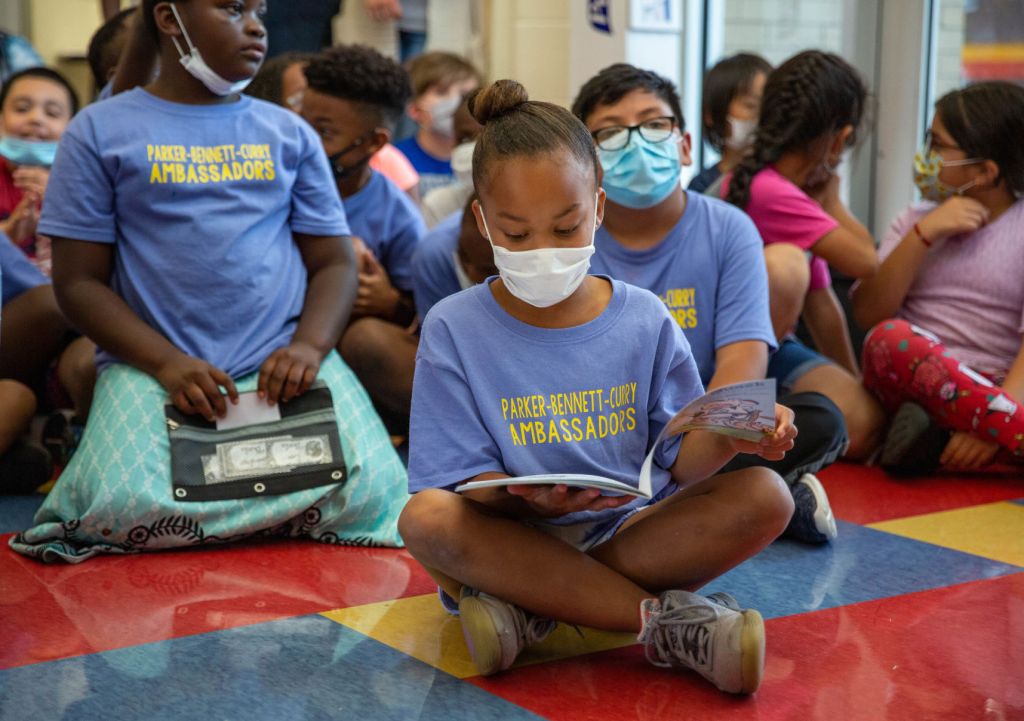State lawmakers weigh school spending increases
Published 3:00 pm Monday, November 8, 2021

- Parker-Bennett-Curry Elementary School third grader Aliyah White looks through the book she chose out of the school’s new book vending machine on Friday, Sept. 17, 2021. (Grace Ramey/photo@bgdailynews.com)
It’s now easier than ever for Kentucky K-12 students to attend school outside the district where they live due in large part to the school choice law enacted this year.
That law – House Bill 563 – makes it easier for students’ state per-pupil funding to follow them to their out-of-district school.
However, one key sticking point remains: What should be done with the portion raised by local school boards through various tax rates and paid for by local residents to educate kids in their communities? Should it stay with the district or go with the student?
It was one of the tricky questions that lawmakers tackled Monday in Frankfort. During the meeting of the General Assembly’s School Funding Task Force, lawmakers reviewed school funding recommendations that they could take up during the legislative session that is scheduled to open in January.
“Local funds, I strongly believe, need to stay with the local district,” said Davonna Page, who serves on the Russellville Independent Schools board and is president of the Kentucky School Boards Association.
“They are raised by the local district. They’re paid by the local residents to educate the students in that district. I feel very strongly that that’s where they need to stay,” Page told the task force.
Last week at the Kentucky Education Summit, Republican leaders in Kentucky’s House and Senate signaled their tentative optimism about the prospect of spending increases for public education in 2022, made possible by a record-breaking state fiscal surplus, WFPL in Louisville reported.
Permanent state funding for full-day kindergarten and fully covering districts’ school transportation costs topped the list Monday of recommendations presented to lawmakers.
It’s been a perennial ask for districts for years. Only time will tell if lawmakers can find the money for those priorities next year.
The recommendations also call for state lawmakers to consider moving from basing state per-pupil funding on average daily attendance to average daily membership. It could be done in such a way that schools would still be incentivized to get students to show up for school while also minimizing wild swings in school funding year-to-year.
Lawmakers have also been asked to create plans to fully fund implementation of a 2019 school safety bill passed in response to a fatal school shooting in Marshall County that killed two 15-year-old students.
Expanding school-based family resource and youth services centers, financial impact reports examining how state mandates affect schools and having the Legislative Research Commission study the cost of “an adequate public education” in Kentucky round out other recommendations.
Monday’s meeting of the School Funding Task Force also included a report from Kentucky Department of Education officials about the potential consequences of allowing local tax revenue to flow out of and into neighboring school districts with out-of-district students.
Robin Kinney, an associate education commissioner with the department, said the agency has studied four possible options for allowing local funds to follow students out of their district, concluding that “the safest and easiest to accomplish” approach would be to prohibit those funds from following students.
It’s likely the only option, Kinney said, that would avoid legal challenges from school districts.
During the meeting, Lawrence County Schools Superintendent Robbie Fletcher discussed the potential consequences of a so-called “open borders” policy for school districts, which he said could cause schools to close in some districts and open in others.
He cited one of his district’s schools – a 5-star school under the state’s school assessment system – as a potential casualty, considering that some students who live closer to neighboring schools would choose to go there instead.
“Unfortunately, the students that can’t afford to drive elsewhere have to stay,” he said, potentially leaving them stranded with fewer resources after the school’s per-pupil funding is adjusted accordingly.
Just because a school has fewer students to educate doesn’t mean its fixed costs, such as keeping the lights on, go down, district leaders have pointed out.
“There’s more to the picture than just funding,” Fletcher said.
– Follow education reporter Aaron Mudd on Twitter @NewsByAaron or visit bgdailynews.com.





